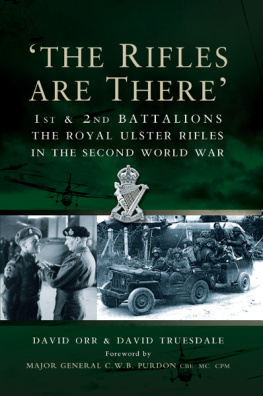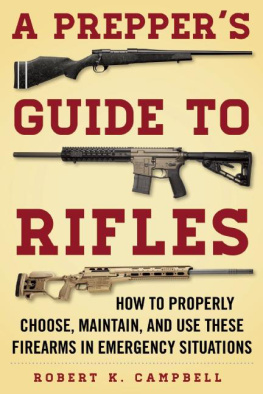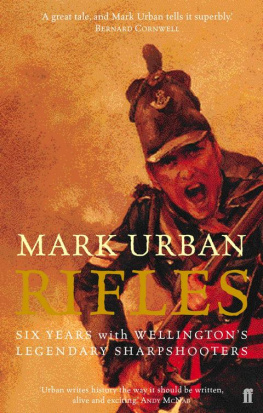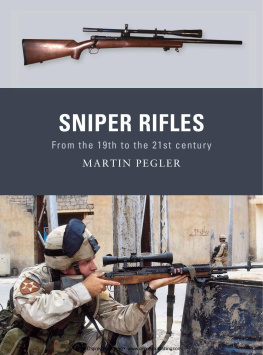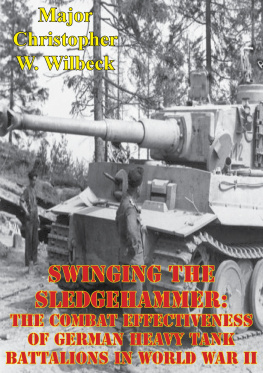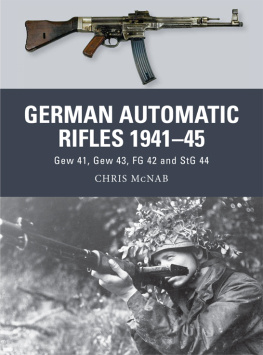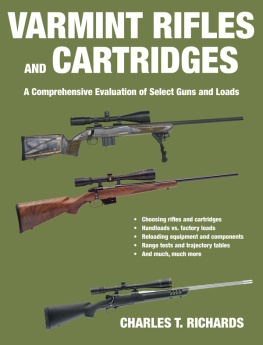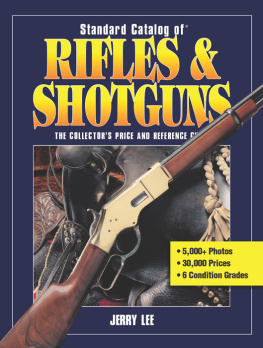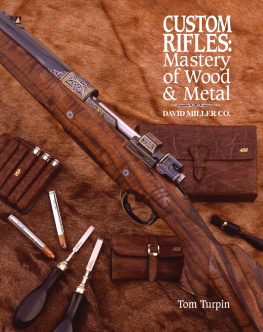First published in Great Britain in 2005 by
Pen & Sword Military
an imprint of
Pen & Sword Books Ltd
47 Church Street
Barnsley
South Yorkshire
S70 2AS
Copyright David R. Orr and David Truesdale
ISBN 1 84415 3495
PRINT ISBN: 978 1 84415 3 497
PDF ISBN: 978 1 78346 5 620
EPUB ISBN: 978 1 78383 0 282
PRC ISBN: 978 1 78346 7 952
The right of David R. Orr and David Truesdale to be identified as Authors of this Work has been asserted by them in accordance with the Copyright, Designs and Patents Act 1988.
A CIP catalogue record for this book is available from the British Library.
All rights reserved. No part of this book may be reproduced or transmitted in any form or by any means, electronic or mechanical including photocopying, recording or by any information storage and retrieval system, without permission from the Publisher in writing.
Typeset in Sabon by Phoenix Typesetting, Auldgirth, Dumfriesshire
Printed and bound in England by CPI UK
Pen & Sword Books Ltd incorporates the imprints of Pen & Sword Aviation, Pen & Sword Maritime, Pen & Sword Military, Wharncliffe Local History, Pen and Sword Select, Pen and Sword Military Classics and Leo Cooper.
For a complete list of Pen & Sword titles please contact
PEN & SWORD BOOKS LIMITED
47 Church Street, Barnsley, South Yorkshire, S70 2AS, England
E-mail:
Website: www.pen-and-sword.co.uk
CONTENTS
Foreword
by Major General Corran Purdon CBE, MC, CPM
The 1st and 2nd Battalions of the Royal Ulster Rifles landed in Normandy on D-Day the 1st in the 6th Airborne Division, by glider at Ranville, and the 2nd in the 3rd Division, by landing craft across the beach slightly west of Ouistreham. No other regiment in the British Army had both its regular battalions in Normandy on D-Day. Field Marshal Montgomery, himself an Ulsterman, was particularly fond of the Rifles. The 2nd Battalion had served under his command in the 8th Division in Palestine from 1937 to 1939, when they had been awarded five MCs, four MMs and eighty-seven Mentions in Despatches. One of these MCs was awarded to Major Charles Sweeny, who became his ADC, and later, in North-West Europe, one of his liaison officers.
When Major General Montgomery, as he then was, took command of the 3rd Division, he specially asked for our 2nd Battalion. At the time of Dunkirk, when the Germans were attacking in great strength and Louvain was under great pressure, Monty is reported to have said, Its all right, the Rifles are there, hence the title of this book. David Truesdale and David Orr are to be congratulated on having caught the flavour of this unique Regiment which captivated all who served in it.
Recruited from all over Ireland, it also welcomed English, Scots, Welsh and Canadians into its wartime ranks, all of whom, in addition to contributing their splendid national qualities, tended, if not to become more Irish than the Irish, at least to grow utterly devoted to the Regiment, and to their fellow Riflemen of all ranks. The Rifles are such a family Regiment, and the Riflemen are an honour and a joy to serve with. Tough, hardy and loyal, brave and uncomplaining, keen and confident, they have a terrific and very special sense of humour. The authors tell an easily read, lively story of the peerless men who made my Regiment Riflemen, NCOs, officers, brothers-in-arms, filled with pride and affection for each other as they fought their war from Normandy to the Baltic, in our splendid 1st and 2nd Battalions. When we talk of our war, we are proud to say The Rifles were there and we thank David Truesdale and David Orr for bringing these achievements to light and to life in such an easy and enjoyable read. Quis Separabit.
Preface
In this the year in which the nation has commemorated the 60th anniversary of the end of the War in Europe and the Far East, attention has rightly focused on those who lived through it all, and in particular the men and women who served in all branches of the Armed Forces. In close parallel with the broad examinations of the events of the Second World War, there have been intense efforts to listen, witness and record the memories of those who took part in the momentous events of those turbulent years. This ranges from small projects in towns and village communities, involving individuals and local museums, to the huge Peoples War project by BBC local radio. The work done throughout the UK recognizes not only the significance of such memories as history, but also the need to preserve them before they are lost in the passage of time.
It is therefore fitting that two historians with a passionate interest in the military history of Ireland have compiled this history of the Royal Ulster Rifles. It does not cover the Regiment as a whole, but concentrates on the two principal units which served during the War, the 1st and 2nd Regular Battalions. David Orr and David Truesdale have compiled a fascinating account which successfully combines the official record of the two battalions with the characters and stories of those who served in them. As a result it has provided a broader and more personal aspect to this history of the Regiment, which chronicles the outstanding service of both battalions during the War, at the same time reminding us all that regiments and their battalions are not nondescript, faceless organizations, but bodies of soldiers bound by and fiercely proud of serving under a particular cap badge. In addition, the history describes the various theatres of war that the Regiment served in and shows how the battalions coped with different situations and circumstances. Moreover, the 1st Battalion, in its air-landing role in 6th Airborne Division, clearly demonstrated the ability of a county infantry regiment to change and adapt to whatever new task the Army might require of it.
Stuart Eastwood
Curator
Border Regiment & Kings Own Royal Border Regiment Museum, Carlisle Castle
Acknowledgements
Alan Brown, Curator Airborne Forces Museum, Aldershot
Major J.M. Campbell, D Company, 2nd Battalion, who showed us hospitality and kindness on a warm summer afternoon in June 2003
Colonel Robin Charley, a former Rifleman and a font of knowledge on the Regiment
Paul Clark, UTV
Richard Doherty, for assistance with research in the National Archive, Kew
Stuart Eastwood, Curator, Border Regiment and Kings Own Royal Border Regiment Museum, Carlisle
Captain John England, D Company, 1st (A) Battalion
Lieutenant Colonel Rex Fendick
Cllr. Ronnie Ferguson, who made this book possible. Ronnie and David Truesdale have several things in common, including an interest in military history, and both being ex-Regular Army and ex-lance corporals in the Ulster Defence Force. Their paths parted for a time when David Truesdale joined the RUC and Ronnie became one of the political parasites, but that does not make him a bad person. The authors and the Museum of the Royal Ulster Rifles owe Ronnie a great deal.
Bob Gerritsen, of Holland
Margaret Graham, of Newtownards, Co. Down
Bob Hilton, ex 2 Para
Colonel Ian Hogg, Curator, Kings Own Scottish Borderers Museum
Captain Jaki Knox, RUR Museum, Belfast
Lieutenant Alan Malcolm, D Company, 1st (A) Battalion
Ian Martin, Kings Own Scottish Borderers Museum
John McCabe, Co. Antrim
Kenneth McClurgan
Gary McCrea, son of Rifleman Charles McCrea, 1st (A) Battalion
Roy McCullough for his help with the maps
Vera McCutcheon, widow of CSM William McCutcheon, 1st (A) Battalion
Molly Pollock McFarland
Craig McGuicken, Somme Heritage Centre, Newtownards, Co. Down
Dougie McGurk, for assistance with the photographs
Amanda Moreno, Curator, Royal Irish Fusiliers Museum, County Armagh
Terence Nelson, RUR Museum, Belfast
Next page
